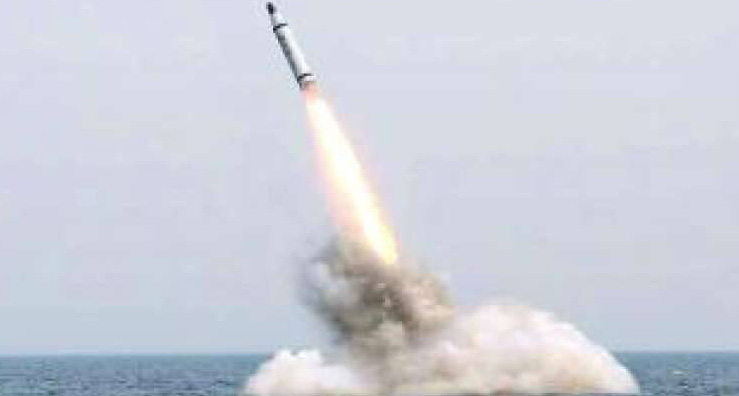Seoul: North Korea confirmed Thursday it has tested a new submarine-launched ballistic missile, calling it a ‘significant achievement’ in its efforts to contain external threats and bolster its military power.
The test-firing Wednesday was North Korea’s first of a submarine-launched missile in three years and came ahead of a weekend resumption of nuclear diplomacy with the United States. Some experts say North Korea wants to show to the US what would happen if diplomacy fails again.
The ‘Korean Central News Agency’ (KNCA) said the test of the ‘Pukguksong-3’ missile in the waters off its east coast was successful and ‘ushered in a new phase in containing the outside forces’ threat to (North Korea) and further bolstering its military muscle for self-defense’. The agency however did not specify which outside forces North Korea was referring to. However, in the past North Korea has said it was forced to develop nuclear-armed missiles to cope with U.S. military threats.
North Korean and US officials are to meet Saturday to restart diplomacy on how to end the North Korean nuclear crisis. That diplomacy largely remains stalemated after the February breakdown of a second summit between President Donald Trump and North Korean leader Kim Jong Un in Vietnam.
North Korea has recently warned its dealings with the United States may end if it fails to come up with new proposals to salvage the nuclear diplomacy by December.
KCNA said the missile was launched in a vertical mode and that its test had no adverse impact on the security of neighboring countries. It said Kim sent “warm congratulations” to the national defense scientific research units involved in the test-firing.
The KCNA report didn’t elaborate on whether the missile was fired from a submarine, a barge or other underwater launch platform.
Pukguksong, or Polaris, is a solid-fuel missile in the North’s weapons arsenal. Also North Korea having an ability to fire a missile from a submarine is a threat to the United States and its allies because such launches are harder to detect early enough to respond. The use of solid fuel also increases a weapon’s mobility.
South Korea’s military said the North Korean missile travelled about 450 kilometres (280 miles) at a maximum altitude of 910 kilometres (565 miles).
Japan lodged an immediate protest, saying the missile landed inside its exclusive economic zone for the first time since November 2017.
AP
